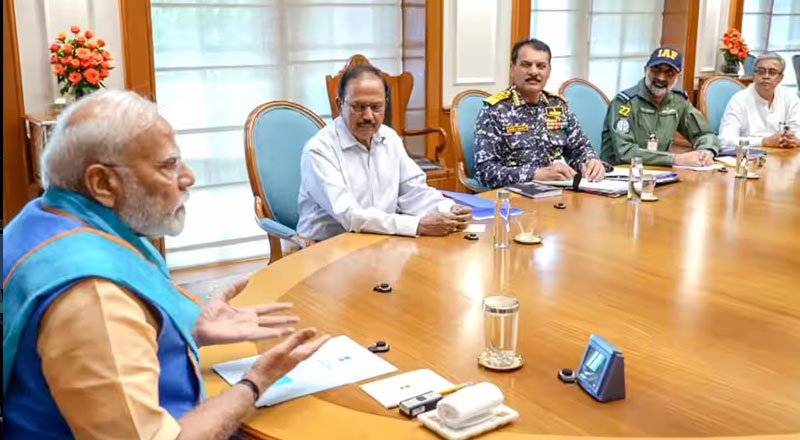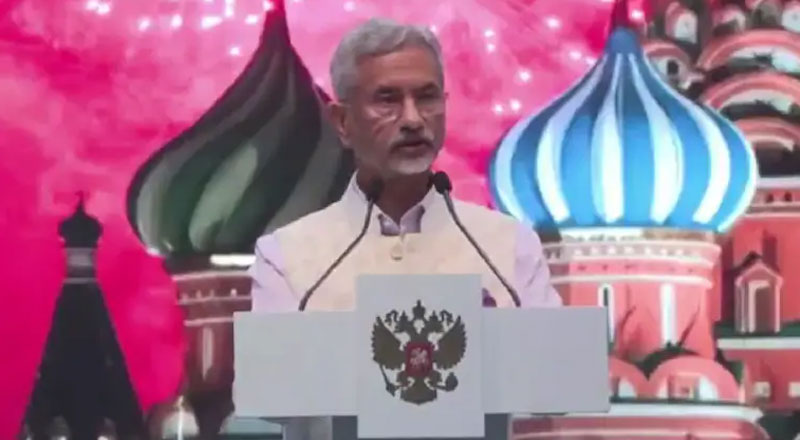Navigating Geopolitics in a Fractured World
As the global political landscape becomes increasingly volatile, world leaders are recalibrating foreign policy to align with shifting power dynamics. From the economic nationalism unleashed by Donald Trump’s tariff regime to the geostrategic ripple effects of China’s Belt and Road Initiative (BRI), and the ongoing Russia-Ukraine war that continues to test the limits of global diplomacy, nations are rethinking traditional alliances and exploring newer avenues of cooperation.
In this context, Indian Prime Minister Narendra Modi’s upcoming visit to Saudi Arabia in April 2025 assumes major significance. It comes at a time when the India-Middle East-Europe Economic Corridor (IMEC) is back on the table following Trump’s potential political resurgence, and West Asia remains a hotbed of conflict—from the Israel-Hamas war to Iranian missile attacks and Red Sea disruptions. For both New Delhi and Riyadh, this visit is not just ceremonial; it is strategic, aspirational, and timely.
Forging a Visionary Partnership
The Indo-Saudi relationship has undergone a remarkable transformation over the past decade. Modi’s visits in 2016 and 2019 laid the groundwork for a broad-based partnership encompassing trade, defence, diaspora welfare, and cultural engagement. His personal rapport with Crown Prince and Prime Minister Mohammed bin Salman (MBS) has infused new life into the bilateral dynamic.
MBS’s ambitious Vision 2030 aims to wean Saudi Arabia off oil dependency and transition into a diversified, tech-savvy economy. Projects like the futuristic Neom City—a technological marvel in the making—align well with India’s strengths in digital innovation, renewable energy, and skilled workforce. If realised, the IMEC corridor would amplify this transformation by offering a stable alternative to the conflict-prone Red Sea–Suez route.
Just as Modi pushes India toward becoming a global economic powerhouse by 2047 under his ‘Viksit Bharat’ vision, MBS seeks to steer Saudi Arabia into a post-oil future. This parallel aspiration has forged a convergence that goes beyond diplomacy—it is grounded in shared development goals and mutual geopolitical necessity.
The Strategic and Economic Architecture
Bilateral trade between India and Saudi Arabia reached $42.98 billion in 2023-24, with India exporting goods worth $11.56 billion and importing $31.42 billion, primarily in energy. Saudi Arabia remains India’s third-largest crude oil supplier and a crucial source of LPG, underscoring mutual dependence.
India’s energy security is inextricably linked with West Asia. Conversely, Saudi Arabia sees India not only as a key market but also a security partner in a region marked by piracy, proxy wars, and Houthi aggression. Joint naval exercises and agreements—such as the $225 million defence export deal with Munitions India Ltd. in 2024—underscore this growing defence cooperation.
The evolving trade architecture has also diversified into sectors like banking, desalination, tourism, and anti-corruption, highlighted by multiple Memoranda of Understanding (MoUs) signed during MBS’s visit to India for the G20 Summit in 2023. These developments signal a trajectory toward strategic, not just transactional, engagement.
Diaspora and Cultural Diplomacy
With over 2.7 million Indians living in Saudi Arabia, the diaspora acts as a bridge—not just economically, but culturally. From construction workers to corporate executives, the Indian community is an integral part of the Kingdom’s workforce.
Under MBS, Saudi Arabia has cautiously liberalised, opening space for women in the public sphere, encouraging entrepreneurship, and nurturing cosmopolitan ideals that resonate with India’s diverse diaspora. The conservative image of the Kingdom is slowly giving way to a more inclusive ethos, reflected in initiatives like Pravasi Parichay, which showcases Indian music, dance, and literature in Saudi cities.
Perhaps the most symbolic example of cultural synergy is the growing popularity of Yoga. Once unthinkable in a Wahhabi-dominated society, yoga is now formally recognised in Saudi Arabia. The 2021 agreement between the Indian Ministry of AYUSH and the Saudi Ministry of Sports paved the way for institutionalised yoga education. The 10th International Yoga Day celebration in 2024, led by a Saudi woman instructor, was emblematic of this shift. Saudi yoga ambassador Nouf Al-Marwaai even received the Padma Shri for her contributions, symbolising the acceptance of Indian wellness traditions in the Arab world.
Historical Roots and Modern Momentum
India and Saudi Arabia established diplomatic relations soon after Indian independence in 1947. The 1970s oil boom brought thousands of Indian workers to the Gulf, cementing a people-to-people connection. Landmark moments like the Delhi Declaration (2006) and the Riyadh Declaration (2010) laid the foundation for a strategic partnership.
However, it was PM Modi’s 2016 visit that truly recalibrated bilateral ties. His receipt of the King Abdulaziz Sash, the highest civilian honour of the Kingdom, was a diplomatic milestone, followed by MBS’s 2019 visit during which he announced a $100 billion investment in India.
Today, both countries are not only economic partners but also security collaborators. With increasing maritime threats and regional instability, Riyadh seeks a reliable partner to safeguard its energy corridors—and India’s growing naval capabilities position it perfectly for the role.
A Partnership Poised for Greater Purpose
Prime Minister Modi’s upcoming visit to Saudi Arabia will likely catalyse a new era of Indo-Saudi engagement. But it is more than a bilateral affair—it’s a litmus test for India’s expanding global influence and Saudi Arabia’s reformist ambitions under MBS.
The timing is crucial. The Middle East remains engulfed in crises: the Israel-Hamas war, Iranian proxy networks (Hezbollah, Hamas, Houthi), sectarian divides, and a divided Islamic world. Add to this the re-emergence of Donald Trump and his controversial plan to transform Gaza into a commercial hub, and the region’s fragility becomes evident. Saudi Arabia, sitting at the centre of this storm, must secure its interests while projecting modernity and stability.
In this context, a strategic partnership with India is not just desirable—it is essential. India provides military reliability, technological expertise, and a vast consumer market. It also offers a non-interventionist model of diplomacy, valued in a region long used to Western entanglements.
At the same time, this evolving relationship exposes deep contradictions. Saudi Arabia’s rapprochement with the West and liberal overtures are often viewed with suspicion in parts of the Muslim world. There’s a growing perception that MBS is decoupling from traditional Islamic alliances. This complicates Riyadh’s foreign policy, especially if a US-Iran conflict erupts—potentially endangering Saudi oil infrastructure and national security.
Therefore, Modi’s visit is as much about safeguarding mutual interests as it is about shaping a new geopolitical architecture—one that reflects a multipolar world where regional powers like India and Saudi Arabia take centre stage in ensuring peace, stability, and prosperity.
In the end, the India-Saudi partnership is more than a reflection of bilateral success—it’s a blueprint for diplomacy that blends pragmatism with vision, tradition with transformation, and cultural depth with strategic foresight.
(With inputs from agencies)





